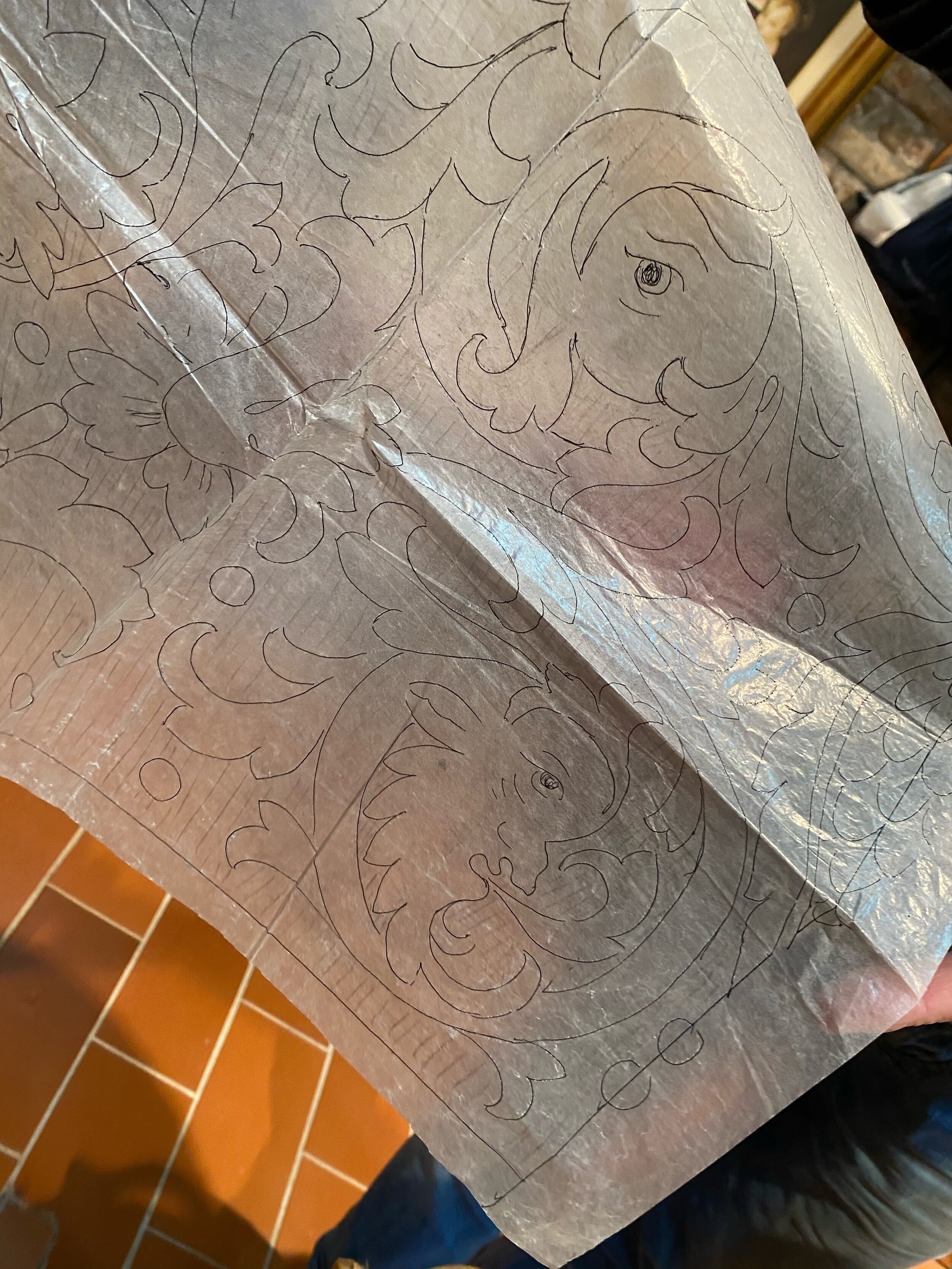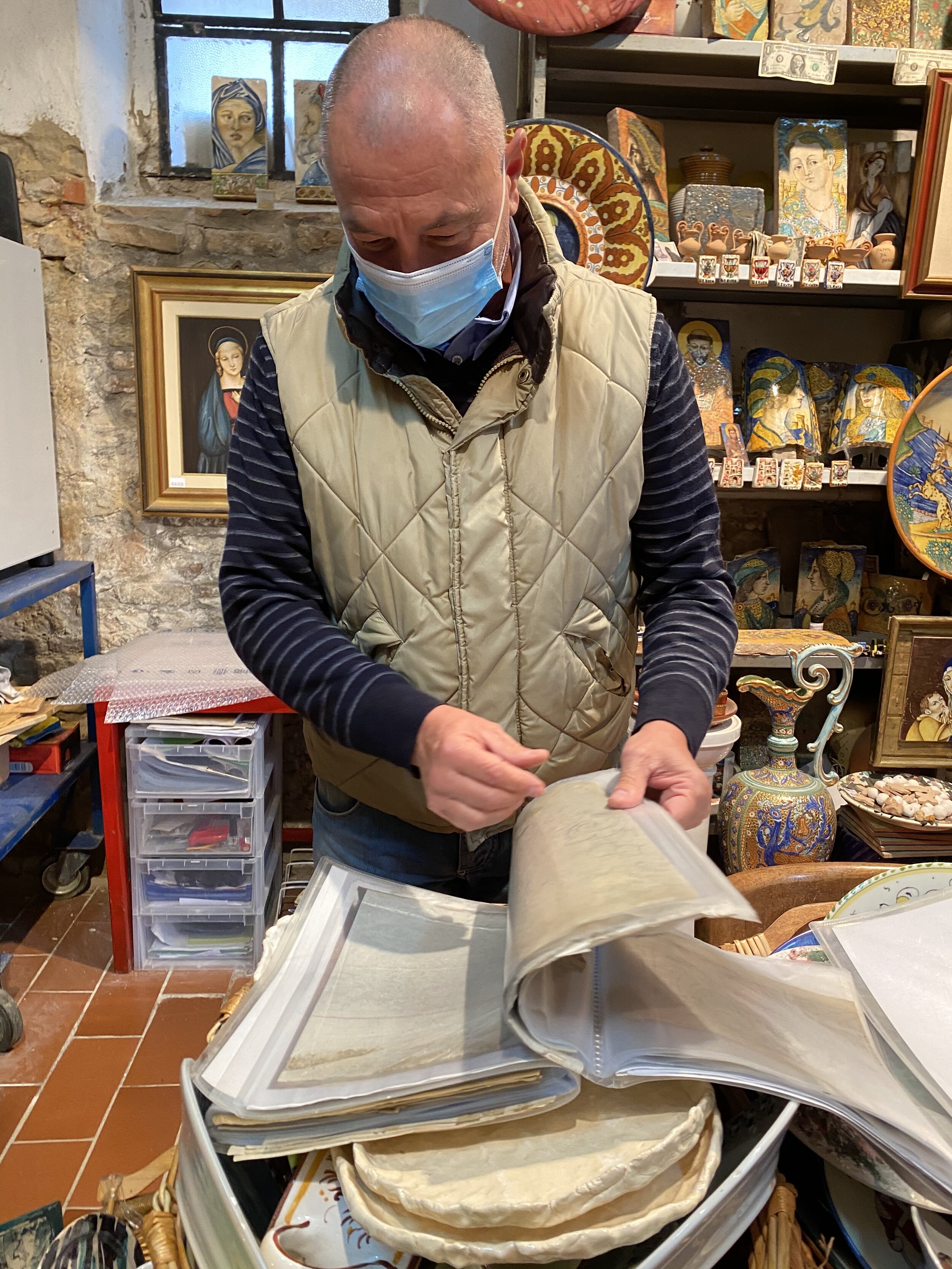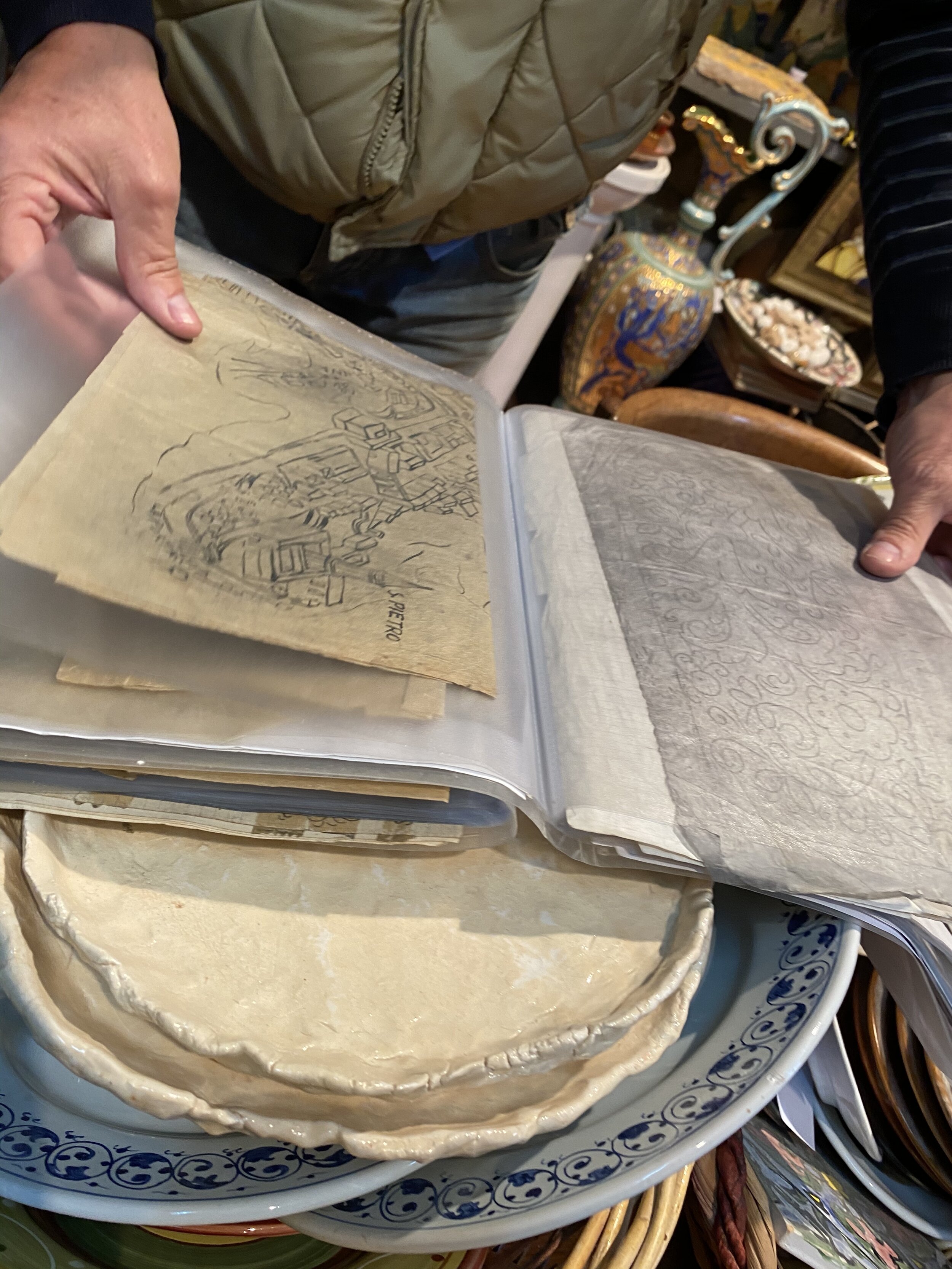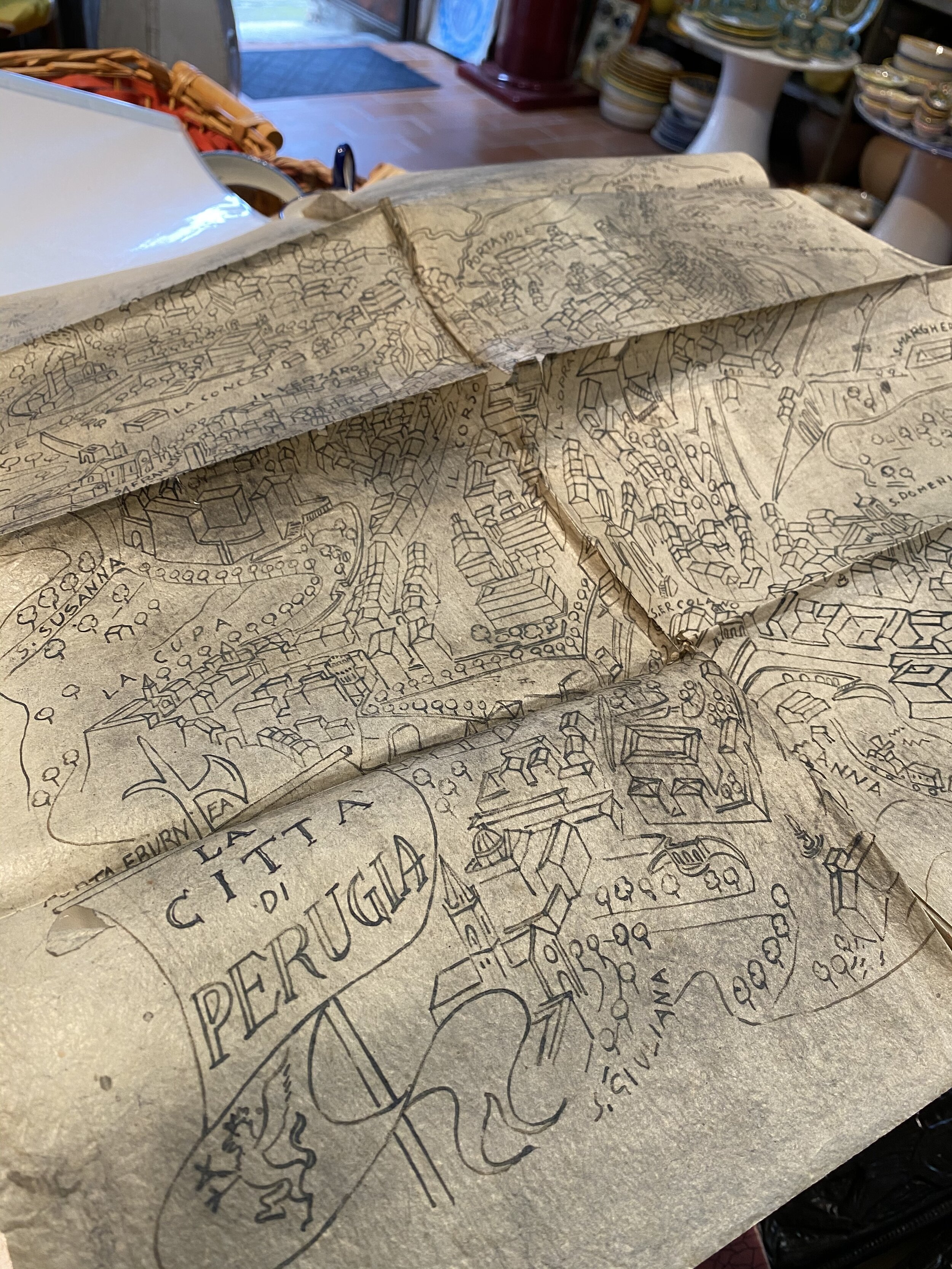Preserving the Past in a Plate
/I say I’ve never been to Deruta, but that’s not exactly true. You see, years ago, when my eldest son (who is currently living with his girlfriend in the Lower East Side of Manhattan) was praying to the tooth fairy and my middle daughter still napped in a stroller and my youngest wasn’t even an idea, we took our first family trip to Italy. That trip to Rome and Umbria changed our lives. I know I’m prone to hyperbole, but this is a fact.
Before that trip, we lived in a rented cottage on a rural Virginia farm and our landlord had agreed to sell us a parcel of land for us to build our first home. We’d gotten so far as to unroll a map of the farm to nod over a likely plot.. I imagined the house, the wrap-around porch overlooking rolling Virginia hills, our landlord’s Belgian draft horses nuzzling against the fence.
And then we went to Rome.
For a week we stepped into no mode of transportation–not a taxi, not a metro, not a bus, not an SUV. We ended every day on the top of one of Rome’s seven hills where we stretched our hands to chart the paths we’d walked that day. Siena nibbled pork chop bones in her stroller while kicking her leg in time with accordion music. Nicolas orchestrated games as we passed ancient Roman ruins at seemingly every corner. Everything felt connected in a way it never had before.
After that, the idea of country living lost some luster and we bought a house a half mile from Charlottesville’s historic pedestrian mall, in a neighborhood where we could walk to get a cup of coffee, an artisanal popsicle, a plate of bacon wrapped dates, or a bottle of wine at a wine shop where if you asked, “I need a wine to go with my pork roast,” the sommelier asked, “how fatty is it?”
In fact, that week in Rome was so joyous, it ruined us for the start of the next leg of our journey, a week in Todi. I felt downright depressed at the quiet, at the lack of jaw dropping surprises at every turn, at the ability to spend all day walking to new tastes and new adventures. We had to drive to do our touring, and sometimes that just grated. As it did on the day early in our week when we decided to visit Deruta.
As we took out the map to trace the roads, my eyes darted to the window. October fog pressed down, promising rain. The kids were fractious. We overrode our listlessness and clicked the kids into the car. But once we pulled into Deruta, the rain began lashing and that town arch seemed a warning. We decided we just couldn’t. So we drove away.
Fast forward to now, and I find this memory endlessly diverting. Nowadays, rainy grey days in Umbria are among my favorite. To be fair, I did grow to love them even just in the week we stayed in Todi. One of my clearest memories of that trip is an autumn market in a town I no longer remember, but may have been Citta di Castello. The market was interesting enough, but the part I really remember is how we dragged our soggy selves into a restaurant and sat on wooden benches with a view to the fire blazing in the kitchen beyond. Golden light from the osteria spilled onto the grey cobblestones outside the door, and the room rang with banter and the heady smell of grilling meats.
I realized then what I know now—the beauty in the gray is that it underscores the light. Hunkering into a cozy space, nestled and warm, has no luster while the sun is shining. Sipping from my stemless glass of red wine, watching the bustle and my children hunkered to draw on the paper tablecloths while waiters smiled before placing down another plate of something that smelled amazing, well, I felt complete.
I’m glad we stayed in Umbria long enough to find the charm, otherwise, I never would have considered moving here. And so much else would never have happened.
When we finally moved to Umbria nine years later, I suggested visiting Deruta, of course. We have two pieces of ceramics in our Virginia house that have “Deruta” stamped on the bottom (a biscotti jar and what we call a “chicken of wine” but probably has a more elegant name). Those pieces are a constant reminder of our lack of tenacity, the day we turned back at the threat of a little rain.
But somehow pulling up to the archway all those years ago checked the “Deruta” box in my brain; “been there, did that”. Which is very unlike me. A whole year in Umbria, and we never drove the 25 minutes across the valley to see what we’d missed all those years ago.
Our scope is different this trip in Italy. Traveling outside our region, let alone outside the country, is daunting given the pandemic, so we’re committed to deepening our understanding of Umbria.
And if you ask any Umbria aficionado what they love about the region, they’ll say, “wine, olive oil, and ceramics.” Ceramics. I do like ceramics. We don’t have much at home. Just those two pieces from Deruta and a set of candlesticks that aren’t the right size to fit any candles and so they are more dust-sticks than anything else. I never thought too much about our lack of ceramics, though, until our trip to Gallipoli. Our house there came stocked with a variety of blue and white ceramic plates and platters and bowls. I found myself excited to set the table, to plate the pasta and mussels, because those ceramics, they turned the table into art. Even simple meals seemed extraordinary.
Dishes in Gallipoli, Puglia
I particularly noticed the beauty of the ceramics in Gallipoli because the house we’re staying in in Spello doesn’t have any serving bowls or platters. I serve salad in the spinner and I serve pasta in the pot. It’s totally fine, and what would expect in a rental. In fact, I took this as a sign that we should load up on ceramics that we can enjoy here, and then bring home as a reminder of our Umbrian sojourn.
Where better to begin the search for ceramics than in Deruta, known the world over for their excellence in this art? Thanks to my new worldview where context is better than ratings, I scrolled through the Facebook group for expats in Umbria for references to ceramics shops in Deruta, found Antica Fornace, lauded for its nice people. I contacted them to set up a visit.
I didn’t waste more than a few moments wondering if I should have virtually comparison shopped on website pages, if there was possibly a “better” place to purchase “better” ceramics.
Thank goodness, because this route allowed us not only to fall in love with an art form and a town, but also Joan and Giovanni, our new best (and only) friends in Deruta.
They met us at that arch leading into the town and gave us a guided tour. Joan is American and met Giovanni years ago when she was visiting. “I came for ceramics and found a husband,” she quips, her eyes beaming at him.
They walked us through town and I realized that when a town is known for an art form, it elevates the arts all together. Every detail in Deruta was exacting—color, texture, little flourishes that caught and held the eye with wonder. Gabe noticed that what looked like rippling banners were actually ceramics.
As we walked, we easily fell into a lovely conversation and sat for coffee to continue talking about Giovanni’s family history in Deruta. Drinks finished, Giovanni dashed in to get the kids and Joan lottery tickets. Joan told us that during lockdown, asparagus hunting and lottery tickets were their richest sources of amusement. Joan has a lucky streak and won, to which Giovanni dashed to exchange her winnings for more lottery tickets. Rinse and repeat until finally, our table held nothing more than empty sugar packets, curls of that stuff they use to cover scratchable lottery tickets, dirty coffee cups, and lost dreams.
Ah well, Giovanni and Joan are not the type to dwell over the evaporation of imagined winnings. Soon we were walking again, this time to their shop.
And now it’s time for me to tell you something a bit embarrassing.
I think I have a ceramics problem.
I LOVED everything! I could imagine our favorite pork chops on that platter, lemon wedges around the edge. I could imagine riso con sugo in that bowl. We must have lingered over every plate and cup before we realized there was an entire back room. This room was more museum than shop, but what a way to understand the importance of ceramics in Umbria than to see a piece of the set Jackie Kennedy ordered and to chuckle at the ceramic donkey designed for showcasing the enormous chocolate eggs made by the nearby Perugina chocolate factory at Easter.
We admired old photographs of factory workers (including Giovanni’s family), sketches made on paper as fine as onion skin.
I whispered to Keith that I was pretty sure I’d be spending my advance (did I tell you that the Santa Lucia series was purchased by an audiobook company?) on ceramics.
What with all this admiration of product and history, and frankly of these beautiful people, the backstory they shared didn’t adhere to my brain as well as it should have. I knew I should have take notes, but how could I when there was so much to appreciate?
Luckily, Joan and Giovanni very kindly agreed to send me a written version of the backstory, which meant that when we gathered afterwards for Prosecco and snacks on the outskirts of Deruta, we could talk about life, love, Umbria, food, travel, and all the rest of the things people meeting in Umbria talk about.
I’ve turned their write up into a guest-post, part of my Local Guide series. Here is the link! I encourage you to give it a read, and when next you are in Umbria, swing through Deruta. But don’t be a dope and just leave if it’s gray and cold. Put on your big-kid galoshes and head right through the enormous arch that leads to the town. Once you stumble on one beautiful detail after another, once you are warmed by the bright eyes of new friends, you’ll be so glad you decided to brave the fog and enter the embrace of Deruta.
Have you been to Deruta? What did you think? Is it on your bucket list? Share this post with your friends!



















